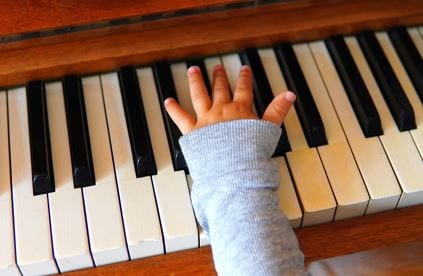Musician hands and other common conditions

Hand & upper extremity injuries
Music has been around for quite some time. In fact, the first musical instrument is believed to be a flute carved from the bone of an extinct cave bear nearly forty-three thousand years ago. Since then, the art form has quickly expanded across the world, establishing itself as a staple of every culture. From children and adults to hobbyists and professionals, musicians have found an outlet into which their talent can flow. This talent, however, can often come with a price.

As with any activity, injuries can happen after a while. More specifically, overuse injuries happen, which are brought on by repetitive motion and actions. It’s important to understand the potential setbacks that a musician may face and the methods used towards preventing injury. Whether you’re a guitarist playing your favorite riff, a pianist gliding up and down the keyboard or a drummer bashing on the kit, most musicians end up experiencing some sort of injury from constant playing.
de Quervain’s tendonitis
First dorsal compartment tendonitis, also known as de Quervain’s Tendonitis, is a condition caused by irritation or inflammation of the wrist tendons at the base of the thumb. The inflammation causes swelling to the tunnel or sheath surrounding the tendon, further causing pain to the thumb and wrist. Someone with de Quervain’s Tendonitis may not be able to make a fist or grasp objects without some form of pain. Treatment includes splints, anti-inflammatories, rest and corticosteroid injections. Surgery may also be recommended.
Carpal tunnel syndrome

Carpal Tunnel Syndrome is a condition caused by increased pressure on the median nerve at the wrist. The pressure eventually affects the nerve function, resulting in tingling, numbness and pain felt in the hand and fingers. Loss of strength, forearm tenderness and pain during the night may also be experienced. Guitarists and pianists are two types of musicians who commonly experience this condition. Treatment includes splints, anti-inflammatories, rest, corticosteroid injections and physical therapy. Surgery may also be recommended.
Bursitis
Musicians are also susceptible to bursitis, a condition that happens when there is swelling in the bursa. Bursae are thin, fluid-filled sacs that cushion the bone from tendons and muscles. Usually caused by a formal injury, repetitive motions are also known to cause bursitis. While bursae are found all throughout the body, musicians commonly experience bursitis in their shoulders and elbows. Treatment includes splints, anti-inflammatories, rest, corticosteroid injections and physical therapy. Surgery may also be recommended, although rare.
Cubital tunnel syndrome
Cubital Tunnel Syndrome occurs when pressure is placed on the ulnar nerve. This pressure often causes pain, swelling or weakness in the hand. Tingling or numbness of the ring and pinky fingers are also noticed. If the nerve is compressed for prolonged periods of time, muscle wasting in the hand can occur. Treatment includes splints, anti-inflammatories and physical therapy. Surgery may also be recommended.
These are just some of the conditions among a laundry list of injuries that musicians can be affected by. If you are experiencing pain similar to the above or think that you may have a similar condition, or anything related to musician hands, you should contact your hand and upper extremity physicians at Florida Orthopaedic Institute
November 15, 2019


